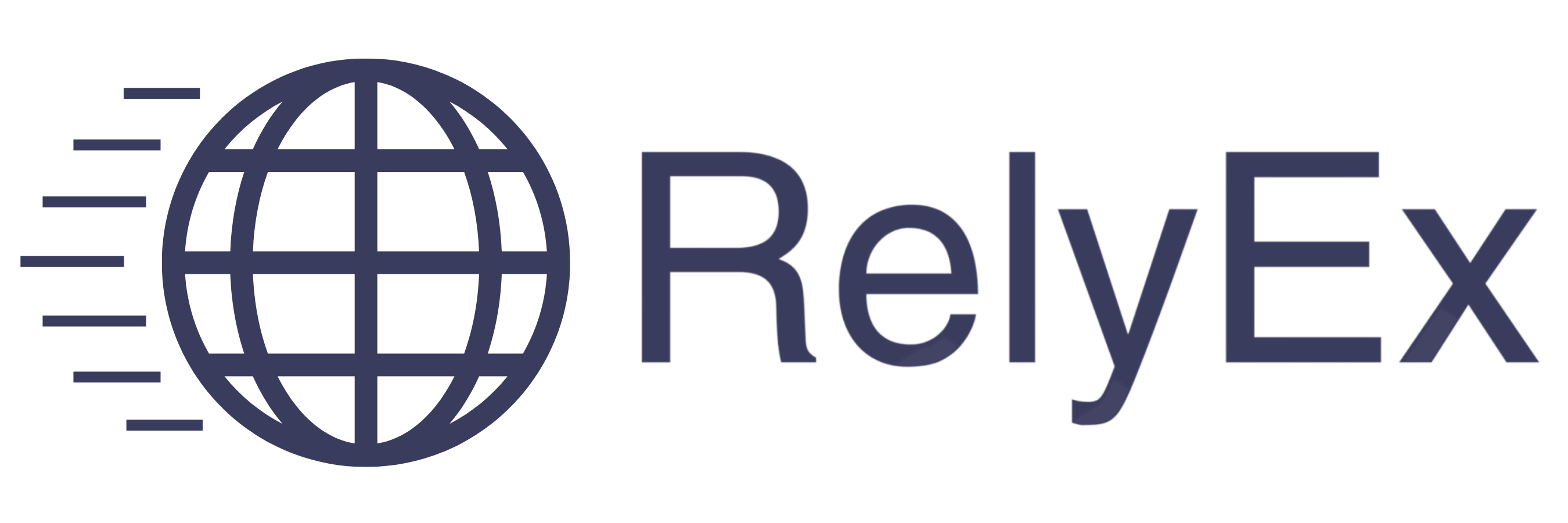Unique Logistics Solutions to Complex Container Drayage Issues
Today, more than 80% of global shipping involves containers. They're packed with everything from personal storage items in dry containers to heavy machinery on flat rack containers. For business owners shipping products, getting a container from point A to point B requires precise planning and high-level tracking. But that's easier said than done when global supply chains become over-congested, leading to loading time issues and delays.
That's bad news for business owners who are already under a massive amount of stress. The truth is that container storage delays can cripple a business, but there's a viable solution: drayage brokers in Seattle, WA like RelyEx. Drayage companies provide unique solutions to minimize demurrage and help ensure the successful delivery of your freight.
With more than 30 combined years of experience and a solutions-oriented team, RelyEx has quickly become the first choice for streamlined, efficient drayage services. To understand the true value of RelyEx's offerings in the global logistics industry, it helps to understand first what drayage is and why it's used.
What is Drayage and Why Is It Important?
If you're a seasoned business owner who uses port drayage to transport your products, you know exactly how important the service can be. But if you were to poll a group of random people, you may get five different definitions of the term "drayage." That begs the question, how is one of the most crucial steps in the supply chain and most vital components of global trade such a confusing concept? When you break it down, it's not too difficult to grasp.
Drayage, by definition, means the transportation of freight from an ocean port to another destination. Today, drayage is also used to describe the process of transporting products and goods over short distances or over "the first mile."
While drayage often means short-distance movements during the supply chain process, it's primarily used in the container shipping space. Drayage loads usually have arrival and departure points in the same city and don't include long-haul, national transportation.
Let us know how we can help.
drayage broker Services
Service Areas
Because a drayage load can mean a few different things, confusion among carriers is common. Many carriers link drayage with going into a port, but that isn't always true. While all drayage loads typically originate from a port of entry, there are often several legs of a drayage journey before a container turns up at its final stop. Legs of a drayage load may include:
Why Are Drayage Companies in Seattle, WA So Important?
You may be thinking, what's so important about drayage? It's such a small step in the container storage transport process. In reality, it's an integral piece needed in the logistics industry and a crucial part of U.S. supply chain management.
To truly understand the importance of drayage, let's use flowers as an example. Most cut flower shipments enter the market from areas in South America until they end up at Dutch auction houses. Once there, wholesalers purchase flowers in bulk and send those products to retail outlets worldwide. Because flowers are perishable, they typically need to be refrigerated and are often shipped in reefer containers. These refrigerated vessels must maintain a certain temp to prevent loss.
Drayage companies like RelyEx allow flower shippers to send their products from Argentinian ports to airports in the Netherlands with peace of mind because their products are protected. The only way to accomplish this feat is with the help of swift, meticulous port drayage services. Drayage companies allow flower shippers to send their products from Argentinian ports to airports in the Netherlands with peace of mind, because their products are protected. The only way to accomplish this feat is with the help of swift, meticulous port drayage services.
If port drayage is compromised, it can cause delays and even fines. You know the packages you get delivered to your front door from apps like Amazon? Without drayage and drayage brokers, one or two-day shipping times wouldn't even be possible.
As a multi-billion-dollar industry in the U.S. alone, it seems like drayage shipping issues shouldn't exist. But the fact is inefficiencies and congestion are still major problems at ports. Whether it's a lack of carriers, absent chassis, or overburdened terminals, delays lead to missed deadlines, lost revenue, and worse.
But anytime challenges exist, so too do innovative solutions.
QUOTE REQUEST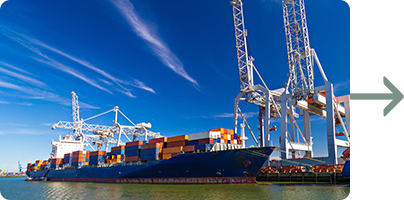
Port
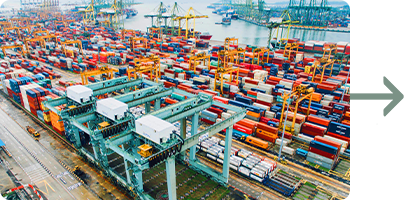
Yard
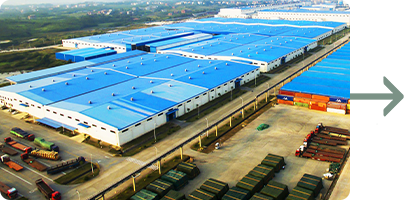
Warehouse
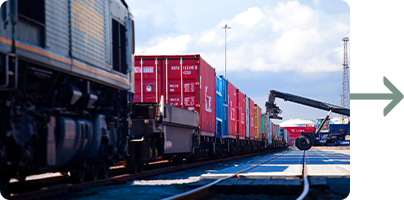
Rail
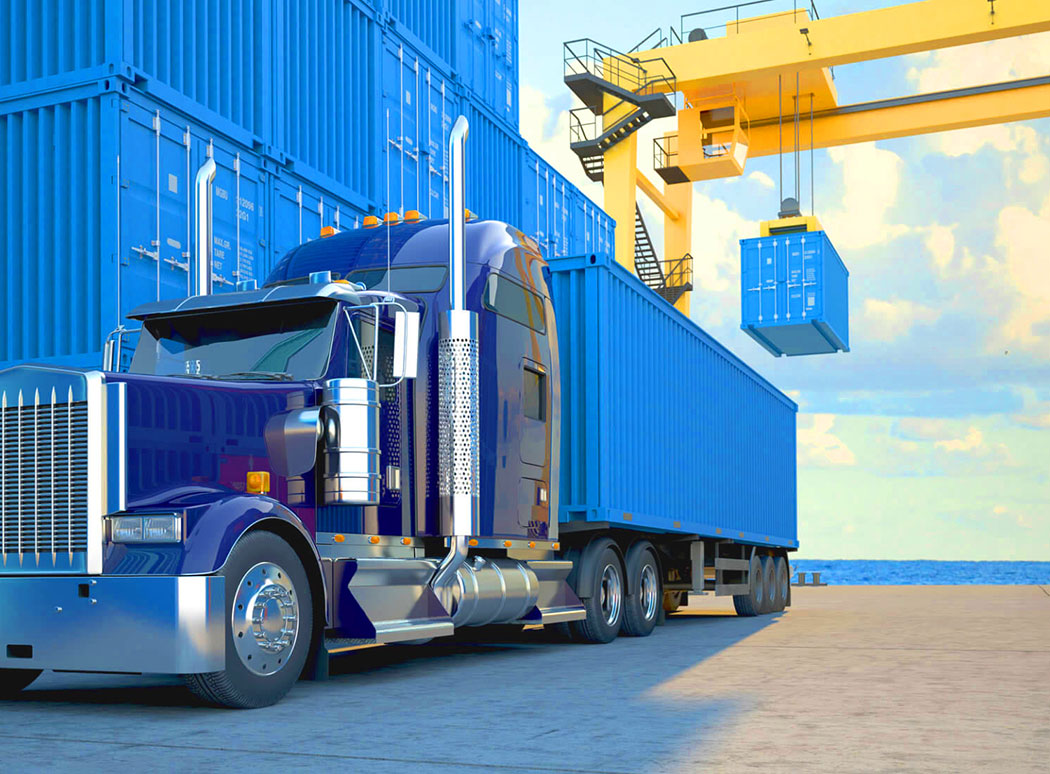
The RelyEx Difference
RelyEx was created because our founders saw a need in the logistics space for more reliability and efficiency. The reality of the shipping and logistics industry is that it has become very transactional. It's an odd evolution, because most businesses seek a third-party logistics partner that is accessible, transparent, and committed to providing solutions.
As the logistics space continues to grow, it creates newfound expenses and complexities. Clients like ours know that and need a supply chain partner who is genuinely interested in their business. By understanding the needs of our customers and carriers, we can provide the most reliable, effective drayage services possible.
Unlike some drayage companies in Seattle, WA, we begin managing your containers before they ever hit the ports by mapping out the most efficient pathways of delivery. That way, our team can discover the best drayage pathways to expedite delivery time and reduce fees that cut into profits.
Our valued drayage customers choose RelyEx because:
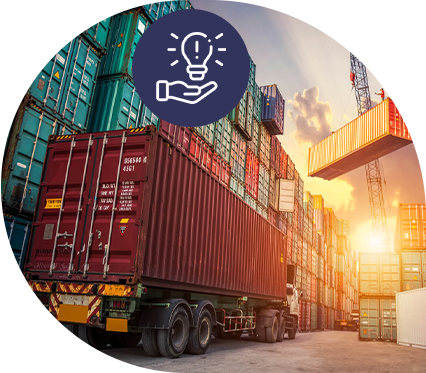
RelyEx Solves Problems
At RelyEx, we like to consider ourselves problem solvers. The nature of the container drayage industry presents new challenges every day, but we're firm believers that there's a solution to every hurdle we encounter. And while some drayage businesses implement a reactive approach, RelyEx customers choose us for our proactive mindset. We take pride in solving your company's drayage challenges to help you avoid frustrating fees, missed expectations, and delayed shipments. We strive to make every transaction successful and streamlined by partnering with shippers who prioritize transparent, prompt, and accurate communication.

RelyEx Has a Unique Vantage Point
RelyEx approaches your business from the customer's perspective - a unique approach that helps us provide high-quality, effective drayage services. We've been in the customers' shoes, know their pain points, and because of that, provide first-hand solutions to stressful supply chain issues. With over 30 years of collective knowledge, our team excels in:
- Inventory Management
- Logistics
- Purchasing
- Finance
Our varied, high-level drayage shipping experience helps us achieve our overarching goal: expertly managing your freight movement needs. That way, you can direct your time and focus on growing the core aspects of your business while we handle the heavy lifting. Throw in proactive planning to avoid bottleneck situations and strong communication for transparent customer relations, and you can see why so many companies trust RelyEx.

RelyEx Nurtures Strong Carrier Relationships
When it comes to shipping logistics, it only takes one mistake by a mediocre worker to disrupt your business. That's why, at RelyEx, we pride ourselves on forming and nurturing relationships with carriers who match our standards of care. Our founding partner started his career transporting freight for companies as an on-demand carrier. He uses that knowledge to maximize the resources of our carriers so that our customer's expectations aren't just met - they're exceeded.
Why Choose RelyEx as Your
Drayage Company in Seattle, WA?
Based in the port city of Seattle, RelyEx has a keen understanding of the challenges of managing the inbound and outbound flow of containers. Our team of container drayage experts provides your business with unique solutions to nuanced shipping problems, minimizing demurrage and ensuring the successful delivery of your freight.
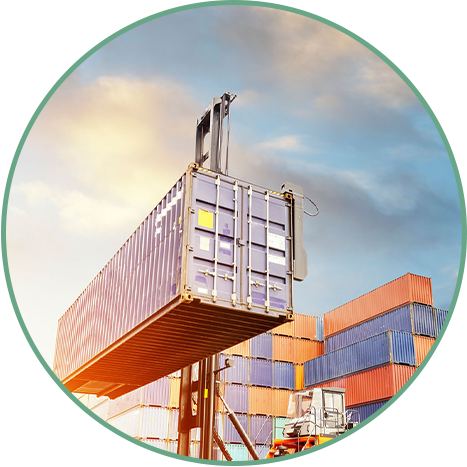
Customers choose RelyEx because:
- We are a reliable drayage logistics partner that manages your freight from beginning to end
- We have a rare industry vantage point with 30+ years of client-side experience
- We foster and fortify the strongest vendor relations
- We take a proactive approach to problem-solving, not a reactive approach
Let us know how we can help.
 843-885-3082
843-885-3082

Your Drayage Shipments Managed from Start to Finish
Some drayage brokers don't care how customers feel about their service as long as they sign a contract and get paid. As a solutions-oriented team, RelyEx takes the opposite approach. We're motivated by the opportunity to overachieve for our customers and to provide them with the best logistics experience possible. With professional experience as carriers and shippers ourselves, we know the roadblocks and challenges you're facing. We excel at mapping out the best plans of action to solve those problems. But that's just the start.
Our tracking experts monitor and manage every aspect of your drayage shipment from booking to delivery, 24/7. Once booked, we look for the availability of your containers hourly once they're at port. When they arrive, our team acts quickly to access your storage containers when they're available.
Plus, RelyEx ensures your company's requirements are met by the carrier during loading and delivery and provide necessary documentation as fast as possible. With real-time tracking updates and access to our customer service professionals, your team has complete visibility throughout the shipping process.
We Source Top-Notch Operators at the Best Prices
Over the years, RelyEx has built a strong network of drayage carriers, transloading locations, and container storage spaces to provide you with the best possible options to match your drayage service needs. We know that searching for quality service presents an added layer of complexity and stress to our customers. That's why we work hard to take that off your plate by connecting you with our reliable shipping partners.
With a background moving freight as an on-demand carrier, our founding partner understands how to maximize the resources and equipment of our carriers to match your needs.
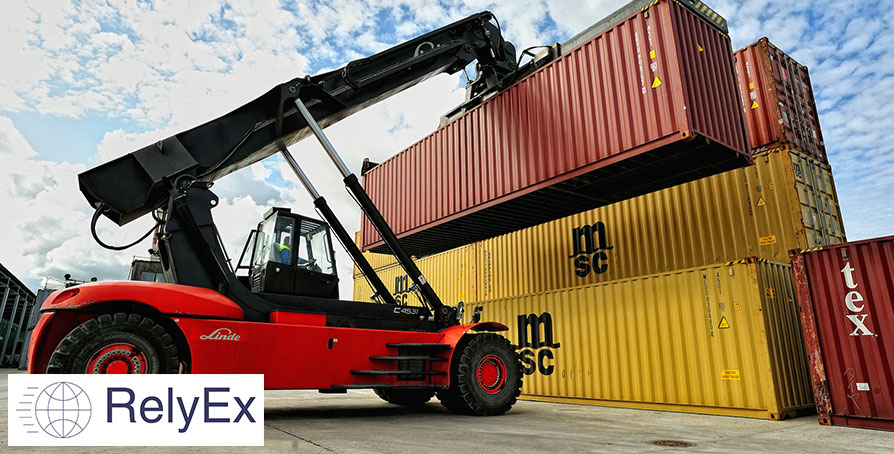

We Make Transparent, Timely Communication a Priority
Like other industries, the global logistics space is complex. Mistakes will be made, and problems will happen. With those truths in mind, RelyEx has built its reputation as problem solvers. Unlike other drayage companies, we don't shy away from this industry's complexities because we take pride in solving problems. Even better, we aim to do what's needed to avoid those problems altogether.
As your logistics partner, we will provide your company with accurate, transparent, and prompt communication. If there are unexpected issues, we'll notify you immediately and will provide several options to remedy the problem. We even offer custom reporting for large clients who need at-the-moment updates and quick access to shipment documentation.
We Have Robust Project Management Experience
Why let the unpredictability of your industry dictate your success? With a background working in manufacturing, our founders are familiar with the demands of managing production schedules and sales orders. That experience makes it abundantly clear to us that every business and industry is different. If you struggle with seasonal surges or other factors, our team supports your business with a mapped-out plan and schedule, so you stay ahead of the game.
QUOTE REQUEST
How to Avoid
Demurrage Fees for Your Business
Based in the port city of Seattle, RelyEx has a keen understanding of the challenges of managing the inbound and outbound flow of containers. Our team of container drayage experts provides your business with unique solutions to nuanced shipping problems, minimizing demurrage and ensuring the successful delivery of your freight.
What is shipping demurrage?
Demurrage is a charge issued by a port, carrier, or railroad company for storing containers that do not load and unload their cargo promptly. Once the daily limit of free time is exceeded, shippers are charged daily demurrage fees until their cargo is shipped. Though different ports have different policies, charges can range from $75 to $150 per container, per day, for a set number of days. Additional demurrage fees are incurred if a shipper exceeds the port's parameters.

What causes demurrage charges?
Even when shippers maintain a tight schedule for unloading freight, external factors can play an uncontrollable part. Typically, shipping mistakes caused by human error trigger the most demurrage charges. Some of the most common causes of demurrage include:
- Paperwork Errors
- Payment Delays
- Documents Received Too Late

Paperwork Errors
Typically, shippers need four specific documents to clear shipments through customs: A Bill of Lading (or BOL), a commercial invoice, a packing list, and an arrival notice. Seasoned drayage brokers like RelyEx are used to preparing these documents, but new shippers tend to miss this step due to inexperience.
Payment Delays
If a shipper only pays for part of their shipment, a vessel operator may refuse to release their freight until their bill is fully paid. Payment delays lead to cargo detention at the port of entry, which triggers demurrage charges.
QUOTE REQUESTDocuments Received Too Late
Paperwork is needed when you're shipping goods with a drayage company. When documents like the Certificate of Origin or Bill of Lading arrive at their destination late, you can expect demurrage fees. RelyEx avoids this situation entirely by being proactive when submitting paperwork.
Additional causes for demurrage fees can include:
- Damaged Container Storage
- Custom Released Containers
- Storage Containers Are Too Heavy
Free Consultation
RelyEx:
The Supply Chain Partner You Can Count On
At RelyEx, we know first-hand how stressful supply chain problems can be for business owners. Though drayage shipping might seem minor on the surface, it affects every stage of your shipping process. And when inevitable hurdles manifest, RelyEx propels you over the proverbial roadblocks with a proactive mindset and a passion for challenging projects. We believe that all problems have a solution, and our unique vantage point allows us to provide first-hand solutions to customers in a wide array of industries.
When it comes to your business, don't settle for anything less than RelyEx. Contact our office today to learn more about how we make your shipping experience streamlined and stress-free.
 843-885-3082
843-885-3082
Latest News in Seattle, WA
What the NFL’s 2024 salary-cap increase means for the Seahawks
Bob Condottahttps://www.seattletimes.com/sports/seahawks/what-the-nfls-2024-salary-cap-increase-means-for-the-seahawks/
The good news for the Seahawks: They learned Friday that the NFL salary cap for 2024 will be a bit higher than expected.The bad news: The other 31 NFL teams found out the same thing.In other words, the news that the cap had been set at $255.4 million for the 2024 season — a $30.6 million jump from 2023 and the largest one-year increase in NFL history — won’t help the Seahawks more than any other team.Mostly it will help players, especially those about to hit free agency who now should have more bargaini...
The good news for the Seahawks: They learned Friday that the NFL salary cap for 2024 will be a bit higher than expected.
The bad news: The other 31 NFL teams found out the same thing.
In other words, the news that the cap had been set at $255.4 million for the 2024 season — a $30.6 million jump from 2023 and the largest one-year increase in NFL history — won’t help the Seahawks more than any other team.
Mostly it will help players, especially those about to hit free agency who now should have more bargaining power.
As Jason Fitzgerald of OvertheCap.com wrote, “the relative buying power of each team remains the same.”
The league explained the cap rise in a statement:
“The unprecedented $30 million increase per club in this year’s Salary Cap is the result of the full repayment of all amounts advanced by the clubs and deferred by the players during the COVID pandemic as well as an extraordinary increase in media revenue for the 2024 season.”
The Seahawks had been projected as being about $400,000 under the cap following Thursday’s news that they had restructured quarterback Geno Smith’s contract to create $4.8 million in cap space. That was based on an estimate of what the cap might be — most estimates had been that it would be in the $242 million range given its rate of increase the previous year (it had risen from $208.2 million in 2022 to last year’s $224.8 million).
Following Friday’s news, they were projected as having $12.9 million in available cap space and $7.8 million in effective cap space.
Effective cap space considers money needed to pay draft picks and having at least 51 players on the roster. The Seahawks have just 49 under contract.
Teams must be at or under the cap when the new league year begins March 13, with the number calculated using the top 51 salaries on each team’s roster.
The added cap space means the Seahawks don’t have to make more moves to get cap compliant.
But the cap going up equally for everyone means they are still near the bottom when it comes to money to spend.
The Seahawks are 22nd in available overall cap space and effective cap space.
Washington tops the list in both with $87 million in overall cap space and $75 million in effective cap space. Seventeen teams have $32 million or more in overall cap space.
That means the Seahawks will have ample competition for free agents when the negotiating period begins March 11. They are still likely to make moves to create cap room.
Some of those could come next week when president of football operations John Schneider and the rest of the personnel department descend on Indianapolis for the annual NFL combine.
Along with its main purpose of giving teams a chance to test, scout and interview potential draft picks, the combine usually serves as the time when teams begin meeting with agents of pending free agents. Each side gets a sense of players’ realistic markets.
One of the Seahawks’ biggest decisions figures to revolve around safety Jamal Adams, as there continues to be speculation that they could cut him to create cap space.
Cutting Adams now would create $7.3 million in cap space with the Seahawks taking a $19.5 million dead-cap hit (meaning money they have already paid Adams that has to be accounted for even if he is no longer playing for them).
Or they could cut Adams now but declare him a post-June 1 release. That would increase the savings to $16.5 million while decreasing the dead-cap hit to $10.4 million. But it means they can’t make use of that cap space until after June 1.
The cap rise could make it easier for the Seahawks to swallow the dead-cap hit. It also could be argued that the cap increase makes it easier to fit in his $26.9 million hit for 2024 — the largest on the team after Smith’s restructure dropped his number to $26.4 million.
Most Read Sports Stories
Adams’ salary had been estimated as potentially taking up 10.87% of the cap under the old number but fell to 10.3% with Friday’s news.
Pro Football Focus wrote this week that “the writing seems on the wall” that Adams will be released.
Fitzgerald wrote that the higher-than-anticipated rise in the cap could mean an extended feeling-out period at the combine as teams and agents each try to get a sense of the true market for players at each position.
Sponsored
“The interesting thing will be how much does this change the asking prices of players in free agency,” he wrote. “In the past the increase in the cap has not had that kind of spike in wages, at least immediately. Most positions at the top do not increase at a significantly greater rate than the salary cap (normally those on the lower end see big jumps and then it catches up to the top), but we have also never seen a jump like this.”
Fitzgerald also noted that the setting of the cap arrived earlier. It usually is set closer to the start of the new league year, which this year is March 13.
“My guess would be because the number was going to be so large the league wanted to get ahead of this before the combine so contract discussions can focus on using the right numbers rather than working with lower figures and having it blow up in everyone’s face a week later and rendering a lot of the work pointless,” he wrote.
He wrote that if teams stick to offers based on last year’s number that “it may be a year where the agents and teams clash more over value. This also should make the franchise players really dig in on holding firm on signing an extension since there is little benefit to signing now unless the team is going to really make a great offer. So it might make for a crazy couple of weeks.”
The cap is based on a formula in which players receive 48% of overall league revenues.
Bob Condotta: 206-515-5699 or bcondotta@seattletimes.com; Bob Condotta covers the Seahawks for the Seattle Times. He provides daily coverage of the team throughout the year.
What the Seahawks’ decision to pay Geno Smith’s roster bonus could mean
Bob Condottahttps://www.seattletimes.com/sports/seahawks/what-the-seahawks-decision-to-pay-geno-smiths-roster-bonus-could-mean/
It was revealed Thursday that the Seahawks have restructured quarterback Geno Smith’s contract, turning a $9.6 million roster bonus into a signing bonus to create salary-cap space for next season.It was a move many took as solidifying his status as the team’s starting quarterback in 2024.The move means the bonus — which Smith had been due to receive if on the roster March 18 — is spread out over the two remaining seasons on Smith’s contract in 2024 and 2025 for salary-cap purposes.Instead of...
It was revealed Thursday that the Seahawks have restructured quarterback Geno Smith’s contract, turning a $9.6 million roster bonus into a signing bonus to create salary-cap space for next season.
It was a move many took as solidifying his status as the team’s starting quarterback in 2024.
The move means the bonus — which Smith had been due to receive if on the roster March 18 — is spread out over the two remaining seasons on Smith’s contract in 2024 and 2025 for salary-cap purposes.
Instead of all $9.6 million going on the cap for the 2024 season, only half does, with the other half moving to 2025.
The Seahawks now are listed as being over the 2024 cap by $430,353 by the website OvertheCap.com. All teams must be at or under the cap by March 13 when the new league year begins.
The move led most observers to conclude that it assures Smith’s standing with the team for next season, especially after Smith’s $12.7 million base salary for 2024 became guaranteed Feb. 16 when he remained on the roster.
When the base-salary deadline passed, many viewed the roster-bonus date as a final deadline for Seattle to make a move with Smith. An ESPN report stated then that the Seahawks could still explore trade options with Smith.
“The Seahawks believed that, with salaries soaring for starting quarterbacks in today’s market, the right decision was to guarantee Smith’s $12.7 million,” ESPN wrote. “ … Now Smith will represent a value to them — or any other team that decides to reach out to see if it can acquire Smith via trade.”
But the Seahawks now must pay the $9.6 million to Smith no matter what. Had they made a move with Smith before the roster bonus kicked in on March 18, they would not have had to pay that out.
However, the move also decreases Smith’s cap hit for 2024 from $31.2 million to $26.4 million and could in theory make it somewhat easier to trade him. Another team trading for Smith would take on less of a cap hit for this season and not have to pay the bonus.
But most logically, the move signals that the Seahawks view Smith as their starter for 2024. Their precedent has generally been to do restructures only with players they intend to keep.
The move could also put Smith’s long-term standing with the team into more question. His cap hit for the 2025 season increases from $33.7 million to $38.5 million.
But for now, the team is focused on 2024.
During his weekly appearance on Seattle Sports 710, Seahawks president of football operations John Schneider said the ability to make the move was written into Smith’s contract, and the team did it to free up cap space.
“It’s just a trigger that’s in there,” Schneider said.
Such triggers are in the contracts of other players, as well.
“At any given time, if we feel the need, we can move that into signing bonus and create more cap room,” Schneider said.
As for the timing of restructuring Smith’s contract now, Schneider said only that when to exercise such a trigger is “based on the player, where they are in their contract and how we set up each contract specific to that player.”
Seattle could restructure Smith’s contract further if needed by turning his $12.7 million salary into a bonus and spreading it out over the 2024 and 2025 seasons.
For now, Smith’s cap hit of $26.4 million ranks 16th among quarterbacks for the 2024 season, according to Spotrac.com.
Seattle could also look to restructure other contracts, such as that of receiver Tyler Lockett, or possibly cut some high-salaried players to create further cap space.
Bob Condotta: 206-515-5699 or bcondotta@seattletimes.com; Bob Condotta covers the Seahawks for the Seattle Times. He provides daily coverage of the team throughout the year.
Husky men face quick turnaround before facing No. 4 Arizona
Percy Allenhttps://www.seattletimes.com/sports/uw-husky-basketball/husky-men-face-quick-turnaround-before-facing-no-4-arizona/
TUCSON, Ariz. — The Huskies had little time to savor Thursday’s bizarre game in which they squandered a 25-point lead in the second half before coming from behind in overtime to claim an 84-82 road win against Arizona State.Following the game, the Washington men’s basketball team took a two-hour bus ride and pulled into Tucson just before midnight. The Huskies spent a couple of hours Friday afternoon preparing for their biggest opponent of the season: No. 4 Arizona.“I don’t care if you have one hou...
TUCSON, Ariz. — The Huskies had little time to savor Thursday’s bizarre game in which they squandered a 25-point lead in the second half before coming from behind in overtime to claim an 84-82 road win against Arizona State.
Following the game, the Washington men’s basketball team took a two-hour bus ride and pulled into Tucson just before midnight. The Huskies spent a couple of hours Friday afternoon preparing for their biggest opponent of the season: No. 4 Arizona.
“I don’t care if you have one hour of sleep or a one-hour turnaround, you get yourself ready to go out there and play,” UW coach Mike Hopkins said. “These are the fun ones. These are the ones you remember.
“If we have that energy, we should put ourselves in position to be right there.”
The Wildcats (20-6, 11-4 Pac-12) are the highest ranked opponent on UW’s schedule and with just four regular-season games remaining, Saturday’s 11 a.m. nationally televised showdown on CBS gives Washington (15-12, 7-9) a rare chance to capture a coveted Quad 1 win to bolster its lackluster No. 69 NET ranking.
It’s also the Huskies’ last regular-season game against the Wildcats as Pac-12 foes and quite possibly their last visit to McKale Center, which is expected to draw a sold-out crowd, in the foreseeable future.
“We know they’re a good team,” UW forward Keion Brooks Jr. said. “Everybody knows they’re a good team, but no team is unbeatable. We feel like we can go in there and make some noise.”
The Wildcats are reeling following an upset 77-74 loss to No. 21 Washington State on Thursday, which snapped their six-game winning streak.
“We’re a good team [and] I believe in these guys,” said UA coach Tommy Lloyd, who lost at home for the first time this season and the third time during his three-year tenure. “We just lost to another good team that’s on a roll right now. I don’t think it’s anything more than that, and we have an obligation to try to come out and play really well on Saturday.
“That’s our job. No one’s gonna feel sorry for us. I certainly don’t.”
Arizona has national-championship aspirations and fell a half-game behind first-place Washington State in the Pac-12 standings.
The Huskies are in a three-way tie for eighth in the Pac-12 and still harboring hopes of a top-four conference finish, which guarantees a first-round bye in the league tournament.
Saturday’s game features the Pac-12 highest scoring teams: Arizona averages 90.7 and Washington scores 80.9 per game.
The Wildcats are led by guard Caleb Love (19.2 points, 5.0 rebounds, 3.3 assists and 1.2 steals) and center Oumar Ballo (13.2 points, 9.9 rebounds and 1.0 blocks), who are Pac-12 player of the year candidates.
“They’re a tough team,” Hopkins said. “They pose so many challenges.”
Washington has lost the past seven games against Arizona, including last year’s 70-67 defeat at McKale Center when Brooks missed a potentially game-tying three-pointer at the buzzer.
“We have to stick together, stay connected, stay with our principles and go out there and give it our all,” Brooks said. “We’re going to go back and watch some film on them. Our coaches are going to put us in a great position to win and then after that, you got to go out there and play the game.”
Percy Allen: pallen@seattletimes.com; Seattle Times staff reporter Percy Allen covers the Washington Huskies and Seattle Storm.
Seattle-area cosplayers on why they love it and how to start
Sarah-Mae McCulloughhttps://www.seattletimes.com/entertainment/5-seattle-area-cosplayers-on-why-they-love-it-and-how-to-start/
Seattleite Kate Edwards was 48 years old when she first dressed up as Thor — a look she’s now known to rock at comic conventions in Seattle and beyond.Standing in the parking garage outside of the San Diego Comic-Con, donning the Marvel hero’s tunic, cape, helmet and gripping Mjolnir (Thor’s hammer) she felt “so freaking kick-ass.”“It’s the external representation of how I feel about myself,” she said. “It’s that confidence I feel I’ve attained in my journe...
Seattleite Kate Edwards was 48 years old when she first dressed up as Thor — a look she’s now known to rock at comic conventions in Seattle and beyond.
Standing in the parking garage outside of the San Diego Comic-Con, donning the Marvel hero’s tunic, cape, helmet and gripping Mjolnir (Thor’s hammer) she felt “so freaking kick-ass.”
“It’s the external representation of how I feel about myself,” she said. “It’s that confidence I feel I’ve attained in my journey in life.”
At the end of the month, thousands of pop culture fans like Edwards will descend on the Seattle Convention Center for Emerald City Comic Con to listen to panels, browse vendors and artist booths and reunite with fellow proud geeks, some in pedestrian clothes, others in cosplay — dressed as their favorite heroes from movies, video games and TV.
↔
Seattleite Kate Edwards is known for her Thor cosplay at Emerald City Comic Con and beyond. (First photo courtesy of Kate Edwards, second photo by Debra Kaplan)
ECCC 2024: Here’s what’s coming to this year’s convention
Ahead of the Feb. 29-March 3 event, we talked to local cosplayers about how they got into the craft and their advice for beginners considering attending in costume this year. All seem to agree with Edwards that the sense of community — even for newbies — found at events like ECCC is hard to beat.
“If you’re going to be cosplaying at a con, you’re going to be amongst instant friends,” Edwards said.
↔
Seattle cosplayer Montgomery McPhee is well known for their “Glam-dalorian” costume, a glamorous spin on a Star Wars Mandalorian look (First photo by Montgomery McPhee, second photo by Andrew Williams)
Why cosplay? From high school AP art classes to a college degree in musical instrument repair, McPhee has “been a creative person my entire life,” and cosplay was added to the list around 2011.
Creating costumes was initially an individual creative outlet, but after friends persuaded McPhee to start attending comic cons, they discovered the thing that made cosplay stick: “This is a community of some of the most highly skilled creators I’ve ever met that are all so willing … [to] help you learn whatever weird techniques or unusual skill you want to learn.”
Favorite outfit:McPhee is well-known at ECCC and beyond for their “Glam-dalorian” costume — a glamorous spin on a “Star Wars” Mandalorian look that all “started off as a joke,” they said. They initially made a Mandalorian costume for a comic con in 2020, but it was canceled after COVID hit. As the suit sat on the shelf for a few years, McPhee considered touching up some flaws they’d found but arrived at another solution instead: “I could just cover all the mistakes with rhinestones, and no one would notice.”
From there, “it just sort of spiraled” into a fully bedazzled suit, with LED lights shining behind 3D-printed armor pieces.
New cosplayer tips: Safety first — make sure to research what safety equipment you might need if you’re crafting your own costume (for example, wear a respirator while working with EVA foam), McPhee said. Also, don’t be afraid to ask other cosplayers questions or to fail and try again. “That’s just the nature of being in a creative field,” they said.
↔
One of Bryce Livingston’s favorite cosplays isn’t any character you’ve heard of: It’s his original character from Dungeons & Dragons, a fantasy tabletop role-playing game. (Courtesy of Bryce Livingston)
Why cosplay?Growing up in Montana, Livingston was “pretty much raised a geek,” interested in “Star Wars” and computers, but it wasn’t until he moved to Seattle in 2013 that he attended his first PAX convention and ECCC. It felt like, “I’m with my people” and “there’s no judgment,” he said. So, naturally, he wanted to join in the cosplay.
“It’s hard to put into words the energy and excitement of being with other people that are there for the exact same reason,” he said — including to show off the favorite characters “we wanted to be when we were kids and still want to be as grown-ups.”
A favorite look: One of Livingston’s favorite cosplays isn’t any character you’ve heard of — it’s his original character from Dungeons & Dragons, a fantasy tabletop role-playing game. The physical costume started with a decked-out hockey helmet his father designed for D&D back in the 1970s, but Livingston has since leveled it up with horns, armor, a fake sword and other gear.
Tips for beginners: Check out cosplay pages on Reddit, go to comic con events and ask people with cool costumes about their process. “Almost everyone’s going to be extremely receptive,” Livingston said. And remember: You don’t have to become an expert or spend a bunch of money to cosplay.
“Some of the most creative things I’ve seen people do are just with stuff that they have lying around the house,” Livingston said, remembering someone who dressed up as “Amazon Prime,” using cardboard boxes to resemble the transformer Optimus Prime.
↔
At the 2023 Emerald City Comic Con, JaVohn EliYahna Perry dressed up as one of her favorite characters, Chucky from the horror franchise “Child’s Play.” (Courtesy of JaVohn EliYahna Perry)
Most Read Entertainment Stories
Why cosplay? As an anime and superhero fan, EliYahna Perry is a regular comic con attendee, but never used to be interested in dressing up. Then a few years ago, she took her kids along to a con, and her daughter wanted to dress up as a character from the anime “Demon Slayer.” Seeing her then-12-year-old dive into cosplay showed her “how cool it was,” Perry said and, last year, she decided to join in.
It was fun to do something “out of the norm,” Perry said. “You don’t just get to go dressing up different every day.”
A favorite cosplay: At last year’s ECCC, Perry dressed up as one of her favorite characters, Chucky from the horror franchise “Child’s Play.” She bought a Chucky costume, then added on some temporary hair coloring and temporary tattoos to mark scars on her face.
Sponsored
Tips for beginners: Do your research on how others have put together whatever look you’re going for, Perry said, but also don’t be afraid to “add your own twist to your character.”
“You’re being someone else,” she said, “but also, throw a little bit of yourself in it.”
↔
Anna He completed her costuming “pandemic project,” a recreation of the Victoria era Lily Gown designed by a French fashion house, over about two years. (First photo by Bill Hinsee, second photo by Shannon Beauclair / Beauclair Photography)
Why cosplay? During her day job in the fashion industry, He is tasked with creating “things that are sellable,” whether or not they fit her personal taste. But as she’s cosplayed over the past decade, it “really allows my imagination to roam,” she said. “It makes the project so much more fun because everything is to my heart’s desire.”
Favorite outfit: He completed her “pandemic project,” a re-creation of the Victorian-era Lily gown designed by a French fashion house, over about two years. She likes to pick projects “not just because something is beautiful, but it should also be meaningful and challenging to me,” He said.
Tips for new cosplayers?Rely on “YouTube university” and reaching out to other cosplayers to pick up needed skills, He said, and “have patience with yourself. Know what you want to accomplish and spend the time to learn it, research it and ask for help.”
↔
Rebecca Maiten cosplays as the American Girl doll Kirsten in an outfit she created over about three weeks with fabric from JoAnn Fabrics. (Rebecca Maiten)
Why cosplay?Maiten credits her long-standing love for fashion history to the American Girl dolls she grew up with, which now inspire many of her costumes. She likes the challenge of being as precise as possible with her outfits, “especially with the American Girl cosplays, because they’re very nostalgic [and] recognizable.”
A favorite cosplay: Maiten recently finished a cosplay of the American Girl doll Kirsten, creating the outfit over about three weeks with fabric from JoAnn Fabrics. The biggest challenge was “getting all of the little bits and accessories right,” she said, from the embroidered handkerchief to the amber heart necklace.
Any tips for beginners? Beginners aspiring to one day sew their own cosplays should start with sewing basics like threading their machines, but when you’re ready for your first clothing project, Maiten said, pick something that doesn’t require fitting, like an elastic waist skirt. (Maiten also has YouTube videos on historical costuming and offers sewing lessons; learn more at ladyrebeccafashions.com.)
You don’t need sewing skills to participate, though. “It’s totally OK to purchase cosplays,” she said, whether you’re dishing out the big bucks to commission a custom-made outfit or buying a $20 costume off Amazon. “Anyone can do cosplay.”
Sarah-Mae McCullough: smccullough@seattletimes.com; Sarah-Mae McCullough is The Seattle Times Features producer.
Puka Nacua, Trent McDuffie, Laiatu Latu: Reflecting on UW’s best recruiting class in 2019
Andy Yamashitahttps://www.seattletimes.com/sports/uw-husky-football/puka-nacua-trent-mcduffie-laiatu-latu-reflecting-on-uws-best-recruiting-class-in-2019/
Jedd Fisch laid out his recruiting goals for 2025 early in his national signing day news conference Feb. 7. The new Washington football coach’s expectations are clear.The Huskies finished their 2024 recruiting cycle with a high school class ranked No. 29 by 247Sports.com. The website graded UW’s incoming transfer class, featuring six of Fisch’s former A...
Jedd Fisch laid out his recruiting goals for 2025 early in his national signing day news conference Feb. 7. The new Washington football coach’s expectations are clear.
The Huskies finished their 2024 recruiting cycle with a high school class ranked No. 29 by 247Sports.com. The website graded UW’s incoming transfer class, featuring six of Fisch’s former Arizona players, 11th in the country. Fisch mentioned both ratings before declaring he’d do everything possible in 2025 to have “the best recruiting class Washington has ever had.”
“Exciting where that looks as we try to build this thing,” said Fisch, who had 24 days between his hiring and the three-day signing period.
Fisch’s use of website rankings publicly to grade his first Washington recruiting class creates a measurable way to grade his success in the upcoming cycle. It also generates some questions.
What is Washington’s best recruiting class by rankings to date? And how did that class actually perform once it got to Montlake?
The answer to the first query is simple. 247Sports.com lists Washington recruiting information dating back to 1999. It also provides two ranking systems — one developed by 247Sports and one composite rating based on the evaluations of several recruiting services averaged into one number.
For example, Fisch’s first class was ranked No. 29 by 247Sports, but was No. 38 according to the composite ratings, behind the likes of Stanford (No. 30), Georgia Tech (No. 33) and new Big Ten rivals Minnesota (No. 36) and Rutgers (No. 37).
Washington’s been ranked a program-best 15th twice since 1999. The Huskies’ 2001 class — which featured wide receiver Reggie Williams and offensive tackle Joe Toledo — set the original benchmark, but Chris Petersen’s 2019 class matched the 2001 group’s ranking. Many of its players contributed to Washington’s historic 2023 season.
“What Washington did was a great job of early identifying,” said Brandon Huffman, 247Sports national recruiting director, “but more importantly, staying on guys.”
Washington’s 2019 class was the culmination of almost three years of building relationships. Defensive lineman Faatui Tuitele said the Huskies were the first program to contact him all the way back in 2016. It was a vindicating moment for Tuitele, and something he remembered when he chose to commit to UW.
The group included some notable names. Wide receiver Puka Nacua, an Associated Press second-team All-Pro selection following his rookie season with the Los Angeles Rams; cornerback Trent McDuffie, already a two-time Super Bowl champion with the Kansas City Chiefs; and edge rusher Laiatu Latu, a projected first-round pick in the upcoming NFL draft, were all highly rated recruits at the top of the class.
“They were one of the first Power Five schools to offer Trent McDuffie and Laiatu Latu,” Huffman said. “They fought the long haul for Puka Nacua when he was a USC commit and the two in-state schools [BYU and Utah] were pushing.”
Yet two of the three transferred out before having a chance to make a real impact at Washington. Nacua left for BYU after the pandemic-shortened 2020 season. Latu medically retired after a neck injury before resurfacing at UCLA, where he developed into a unanimous All-American under Ikaika Malloe, the former Washington defensive line coach.
Malloe was a major part of the Huskies’ well-regarded class. Washington’s two highest-rated 2019 recruits were a pair of defensive tackles: Tuitele and Jacob Bandes. Tuitele said Malloe was a major part of his recruitment, and the bond they created was crucial to his decision.
Tuitele played in 43 games during five seasons while battling a litany of injuries. He had 32 tackles, 3.5 sacks, five passes deflected and two forced fumbles before medically retiring after the 2023 season. Bandes has 47 tackles in 46 career games.
The 2019 class also contained three members of Washington’s 2023 offensive line, which won the Joe Moore Award: Troy Fautanu, Nate Kalepo and Julius Buelow.
Fautanu, a projected first-round pick in the NFL draft this season, was the lowest rated of the trio. Huffman noted Fautanu was seen as a defensive recruit early in his high school career, but the Huskies always pursued him for his potential on the offensive line.
Other 2023 contributors arrived in 2019, too: safeties Asa Turner and Kamren Fabiculanan, along with quarterback Dylan Morris, running back Cameron Davis and 2022 contributors Taj Davis and center Corey Luciano.
Defensive back Mishael Powell and linebacker Drew Fowler signed up as walk-ons in 2019. Powell had 92 career tackles for Washington, while Fowler has been an important special teams contributor for the past two seasons.
The most important signing of the class may have been Bralen Trice. An unheralded three-star recruit out of Phoenix, he accumulated 101 tackles, 18 sacks and 28.5 tackles for a loss in 40 career games at UW. Huffman credited former UW director of player personnel and current 247 recruiting analyst Cooper Petagna for persuading the Huskies to continue pursuing Trice despite Notre Dame making a late push.
Recruiting impactful linemen on both sides of the ball like Trice and Fautanu becomes even more important as the Huskies’ impending Big Ten debut draws closer.
Most Read Sports Stories
No conference recruits nationally like the Big Ten, Fisch said. He also acknowledged all the facets of Washington’s program — from facilities to coaching and support staff to NIL — will be judged directly against the likes of Michigan, Ohio State and Penn State as UW tries to establish itself as part of the Big Ten’s top echelon early.
“You are competing with the big dogs, that all have big money, that are all going to make sure every aspect of their program is an A-plus,” Fisch said Feb. 7.
Of course, not every player had a successful UW career. Safety Cameron Williams seized a starting role as a true freshman in 2019, but transferred to Georgia Southern after playing sparingly in 2022. Four-star linebacker Josh Calvert left for Utah in 2020, while another four-star linebacker, Daniel Heimuli, joined Fisch at Arizona after being suspended indefinitely during November 2022.
Sponsored
Four-star defensive lineman Sama Paama retired from football in 2020 for personal reasons. He later told reporters a series of deaths among close family members led him to step away from the game.
Linebacker Miki Ah You also eventually retired from football, while defensive lineman Noa Ngalu transferred to a junior college. Kicker Tim Horn left for Rice in 2021.
The lowest-rated recruit outside Horn in the 2019 class was arguably UW’s biggest find. Local linebacker Alphonzo Tuputala has been a mainstay in the heart of the Huskies’ defense, racking up 153 tackles in 40 games. Born in Federal Way, Tuputala announced this month he will return for a sixth season on Montlake.
Tuputala was one of the 10 players in the class who have Polynesian roots. Five players — Tuitele, Buelow, Paama, Ah You and Horn — hailed from Hawaii. Tuitele credited his official visit, which he took alongside many of the other Polynesian recruits, for locking in his commitment.
“We saw it,” he said. “Gosh, it was like, ‘Man, we’re really building something great here.’ ”
Andy Yamashita: ayamashita@seattletimes.com; Seattle Times staff reporter Andy Yamashita covers UW football.
Disclaimer:

